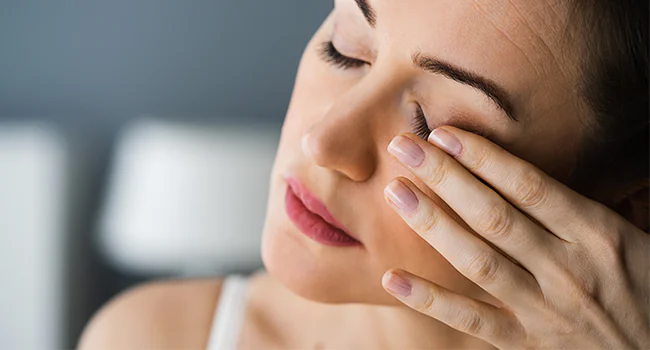Also known as ocular hypertension, high eye pressure refers to any situation in which the pressure inside the eye is higher than usual, i.e., greater than 10 to 21 mm Hg. It is a situation in which the intraocular pressure is greater than 21 mm Hg. The condition is not a disease but is to be closely observed to look out for the onset of glaucoma. In fact, it is often referred to as a ‘glaucoma suspect‘. This is measured using a tonometer.
Causes of High Eye Pressure
- The leading cause of ocular hypertension is an imbalance in the production and drainage of the aqueous humor, that is, the fluid in the eye.
- Studies have shown that post-menopausal women could be at a higher risk of ocular hypertension.
- Persons older than 40 are at risk of developing ocular hypertension and primary open-angle glaucoma.
Symptoms of High Eye Pressure
Most individuals do not experience observable symptoms during the onset of high eye pressure. Only regular checkups with the eye doctor can keep the condition at bay.
The diagnosis of this condition is usually made by checking the drainage system in one’s eye – the doctor checks if the ‘angle’ is open or closed. The technique used to determine the same is called gonioscopy which uses a unique contact lens to examine the drainage angles.
Treatment of High Eye Pressure
- High-eye pressure treatment is usually initiated for people who are believed to be at high risk for glaucomatous loss of vision. Usually, it is treated with topical medicines, and such a treatment is initiated if there is a consistent reading of 28 to 30 mm Hg, indicating a high risk of damage.
- When symptoms such as halos, blurred vision, or pain start to become a frequent occurrence, then it is an indication of increased intraocular pressure. This calls for immediate treatment involving medicines. This prescription ought to be followed up every 3 to 4 months or at the frequency the doctor prescribes. One must be mindful of these medicines’ side effects on oneself.
- Surgery is not often resorted to and used in every rare circumstance.
What can untreated high eye pressure lead to?
It can result in open glaucoma that causes patchy blind spots on your side, central vision in both eyes, and tunnel vision in the advanced stages. This condition may also lead to acute angle-closure glaucoma that results in severe headache, eye pain, nausea, vomiting, halos around lights, and eye redness. If left untreated, this could lead to blindness.
Why CFS?
A multi-specialty hospital, Centre for Sight, is top eye care and vision correction centre that ensures the best care is provided. The hospital is equipped with state- of – art facilities and has an excellent medical and non–medical staff. CFS is a trusted name that offers customer-centric care, allowing it to provide services second to none.
Article: How to tackle High Eye Pressure?
Author: CFS Editorial Team | May 13 2022 | UPDATED 02:40 IST
*The views expressed here are solely those of the author in his private capacity and do not in any way represent the views of Centre for Sight.





